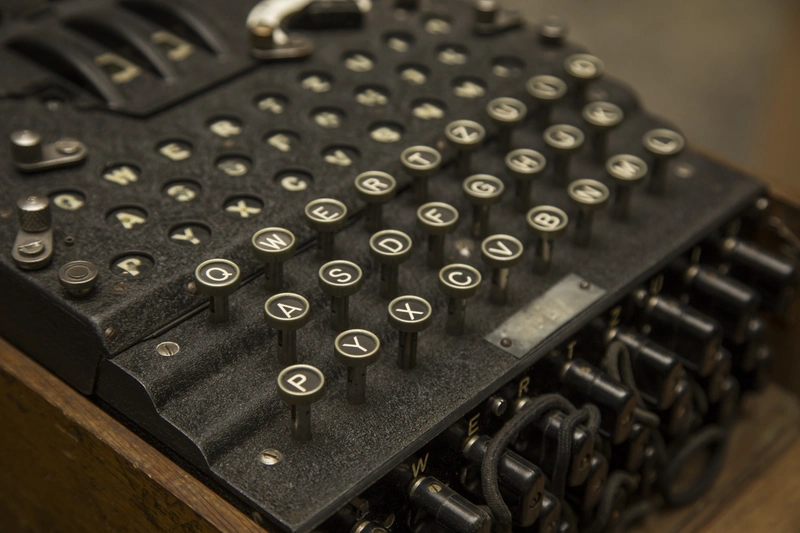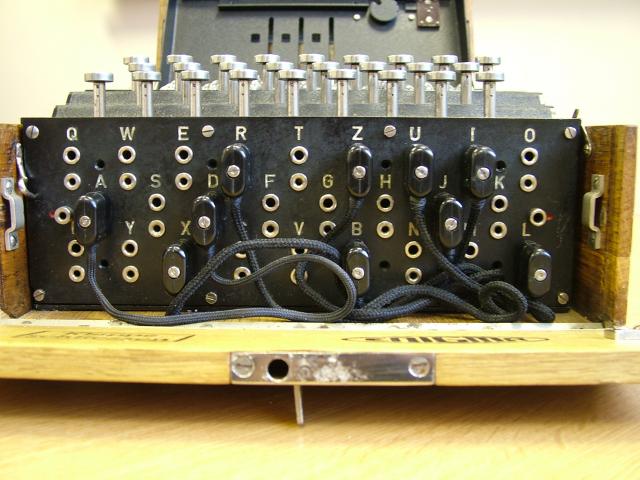
/cdn.vox-cdn.com/assets/1062719/vs04-16_18-09-46x1020.jpg)
The Polish Cipher Bureau developed techniques to defeat the plugboard and find all components of the daily key, which enabled the Cipher Bureau to read German Enigma messages starting from January 1933. Rejewski was aided by cryptanalysts Jerzy Różycki and Henryk Zygalski, both of whom had been recruited with Rejewski from Poznań University. Consequently, the Polish mathematicians were able to build their own Enigma machines, which were called Enigma doubles. The French passed the material to the Poles, and Rejewski used some of that material and the message traffic in September and October to solve for the unknown rotor wiring. Those keys included the plugboard settings. The French spy Hans-Thilo Schmidt obtained access to German cipher materials that included the daily keys used in September and October 1932. Rejewski achieved this result without knowledge of the wiring of the machine, so the result did not allow the Poles to decrypt actual messages. Breaking EnigmaĪround December 1932, Marian Rejewski, a Polish mathematician and cryptanalyst, while working at the Polish Cipher Bureau, used the theory of permutations and flaws in the German military message encipherment procedures to break the message keys of the plugboard Enigma machine. Compact and easily portable, the Enigma machine filled that need.

Since adversaries would likely intercept radio signals, messages had to be protected with secure encipherment. Pre-war German military planning emphasized fast, mobile forces and tactics, later known as blitzkrieg, which depend on radio communication for command and coordination. With its adoption (in slightly modified form) by the German Navy in 1926 and the German Army and Air Force soon after, the name Enigma became widely known in military circles. Japanese and Italian models were also in use. Several different Enigma models were produced, but the German military models, having a plugboard, were the most complex. Early models were used commercially from the early 1920s, and adopted by military and government services of several countries, most notably Nazi Germany before and during World War II. The name is said to be from the Enigma Variations of English composer Edward Elgar. The German firm Scherbius & Ritter, co-founded by Arthur Scherbius, patented ideas for a cipher machine in 1918 and began marketing the finished product under the brand name Enigma in 1923, initially targeted at commercial markets. This was unknown until 2003 when a paper by Karl de Leeuw was found that described in detail Arthur Scherbius' changes. The Enigma machine was invented by the German engineer Arthur Scherbius at the end of World War I.

Many commentators say the flow of Ultra communications intelligence from the decryption of Enigma, Lorenz, and other ciphers, shortened the war substantially, and might even have altered its outcome.
#Nazi enigma simulator series#
While Nazi Germany introduced a series of improvements to Enigma over the years, and these hampered decryption efforts to varying degrees, they did not prevent Poland from cracking the machine prior to the war, enabling the Allies to exploit Enigma-enciphered messages as a major source of intelligence. The receiving station has to know and use the exact settings employed by the transmitting station to successfully decrypt a message. The security of the system depends on a set of machine settings that were generally changed daily during the war, based on secret key lists distributed in advance, and on other settings that were changed for each message. The rotor mechanism changes the electrical connections between the keys and the lights with each keypress. Entering ciphertext transforms it back into readable plaintext. If plain text is entered, the lit-up letters are the encoded ciphertext. In typical use, one person enters text on the Enigma's keyboard and another person writes down which of 26 lights above the keyboard lights up at each key press. Enigma has an electromechanical rotor mechanism that scrambles the 26 letters of the alphabet.


 0 kommentar(er)
0 kommentar(er)
